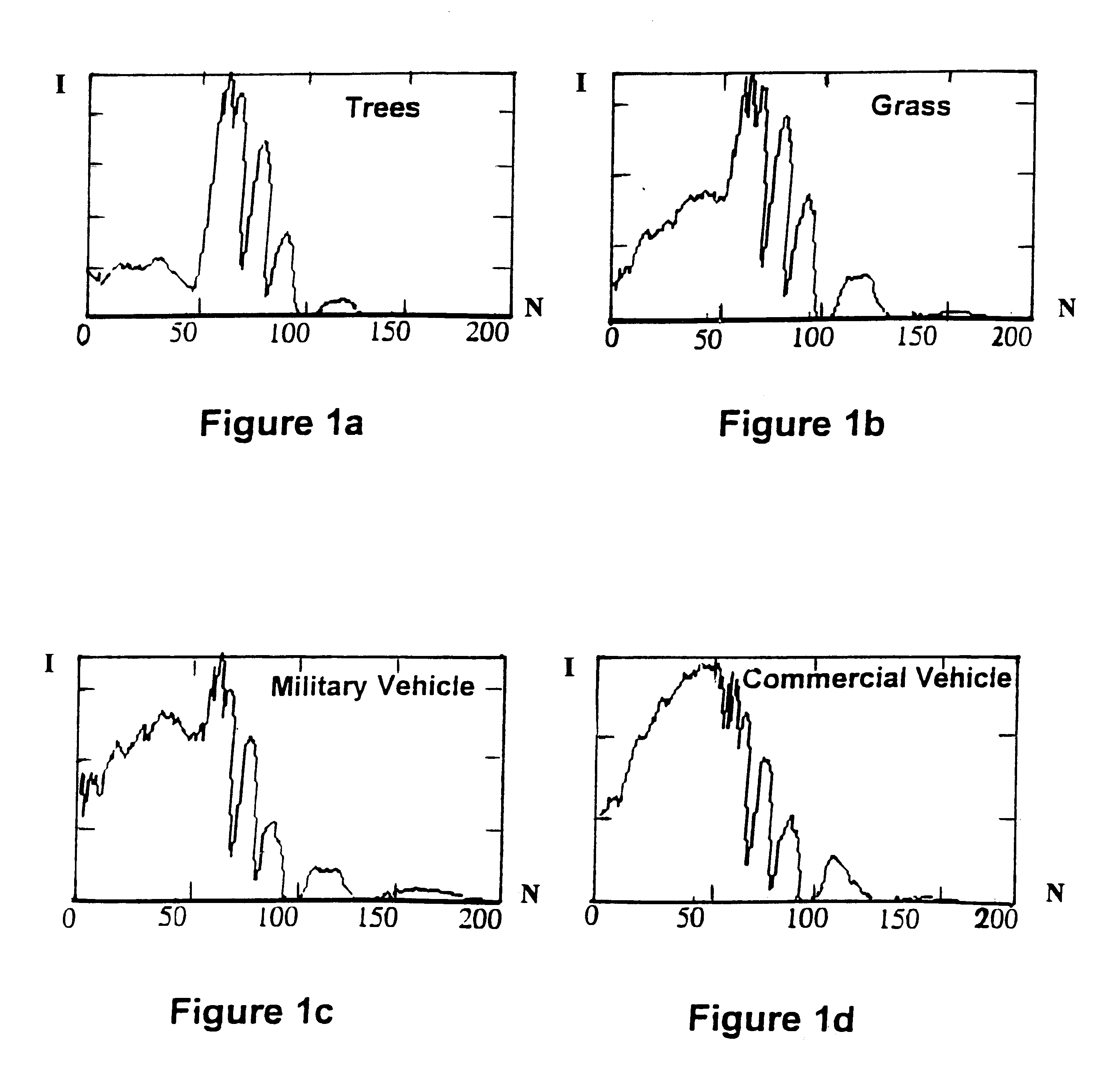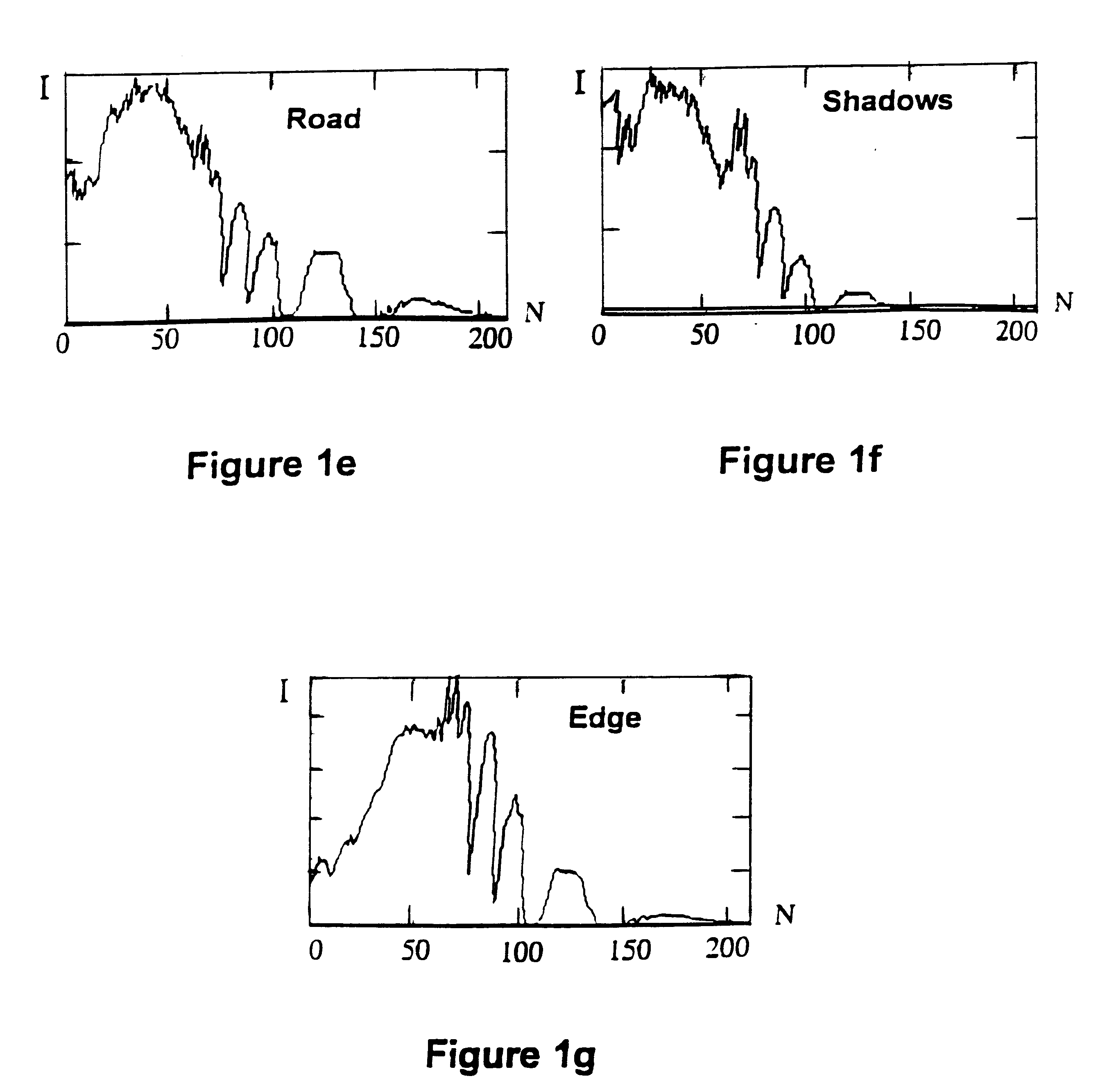Ares method of sub-pixel target detection
a sub-pixel target and detection method technology, applied in the field of hyperspectral image sensors, can solve the problems of high false alarm rate, insufficient representation of target or background characteristics, and significant limitations of techniques in real-time surveillance and reconnaissance applications
- Summary
- Abstract
- Description
- Claims
- Application Information
AI Technical Summary
Problems solved by technology
Method used
Image
Examples
Embodiment Construction
The ARES target detection method requires a prerecorded library of endmembers based mainly on natural clutter. Endmembers are vector quantities representing the spectral signatures of pixel locations from the current sensor scan line that contain various types of natural clutter. Each endmember is normalized by dividing its magnitude by its modulus (the square root of the sum of the squares of its vector is component magnitudes) to form a unity vector. One normalized endmember, based on a pixel location representing a man made material, is included in the library to maximize clutter suppression as the ARES correlation proceeds.
The U.S. Army's Forest Radiance I database collected with the HYDICE hyperspectral sensor at Aberdeen Proving Ground in Maryland has been utilized to demonstrate that the algorithm to be described in this patent is sufficiently robust and optimized to accommodate high throughput, real-time, subpixel, hyperspectral target detection (or identification of terrain...
PUM
 Login to View More
Login to View More Abstract
Description
Claims
Application Information
 Login to View More
Login to View More - R&D
- Intellectual Property
- Life Sciences
- Materials
- Tech Scout
- Unparalleled Data Quality
- Higher Quality Content
- 60% Fewer Hallucinations
Browse by: Latest US Patents, China's latest patents, Technical Efficacy Thesaurus, Application Domain, Technology Topic, Popular Technical Reports.
© 2025 PatSnap. All rights reserved.Legal|Privacy policy|Modern Slavery Act Transparency Statement|Sitemap|About US| Contact US: help@patsnap.com



